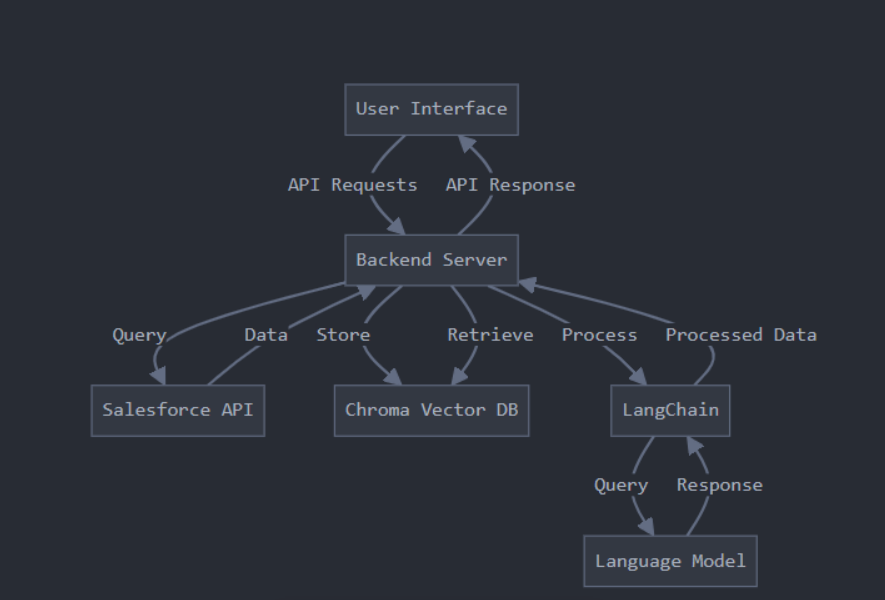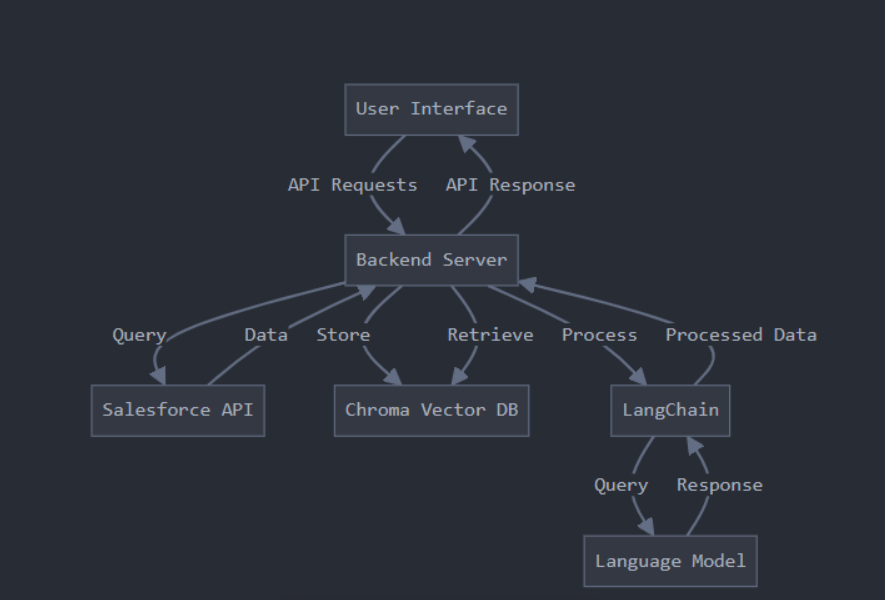In today’s data-driven world, Software as a Service (SaaS) platforms are essential for managing and processing large volumes of client data. When integrating with platforms like Salesforce, it becomes even more crucial to handle data efficiently and securely, especially in a multi-tenant environment. In this blog, we’ll explore how a SaaS system can interact with Salesforce data using a combination of cutting-edge tools like language models, LangChain, and Chroma.

The Architecture
At the heart of this SaaS system is a Backend Server that interacts with multiple components, such as Salesforce API, Chroma Vector DB, and LangChain, to process and serve data requests from various clients (tenants).
- User Interface and API Requests
- Users interact with the system through a user-friendly interface that sends API requests to the backend. The backend processes these requests and returns responses based on the data retrieved from Salesforce or other sources.
- Backend Server Operations
- The backend handles API requests by communicating with several key services:
- Salesforce API: Queries data from Salesforce and sends it back to the server.
- Chroma Vector Database: A high-performance vector database used to store and retrieve tenant-specific data efficiently.
- LangChain: A framework that facilitates the use of language models to process and generate responses, helping the backend interpret and answer complex user queries.
- The backend handles API requests by communicating with several key services:
- Chroma and LangChain for Efficient Data Processing
- Chroma Vector DB is employed to store tenant-specific data, ensuring quick and efficient retrieval when needed. Meanwhile, LangChain integrates with a language model to process this data, making it easier to answer complex queries.
Multi-Tenant Salesforce Data Management

For a SaaS platform managing multiple organizations, ensuring data security and segregation is essential. Each organization (or tenant) has its unique set of Salesforce data, and this architecture ensures that data is handled securely:
- SaaS Application and API Gateway
- The application authenticates users via an Identity Provider and forwards requests through an API Gateway. This gateway validates tokens and routes requests to the correct tenant manager.
- Tenant Management
- A Tenant Manager retrieves tenant configurations from a metadata database and queries data through a Data Access Layer connected to tenant-specific Chroma databases. This ensures that each organization’s data remains isolated and securely stored.
- Data Sync and Security
- A Data Sync Service continuously updates tenant data, fetching and syncing changes from Salesforce via the API. The system ensures data consistency and security across all tenants.
By combining language models with powerful tools like LangChain and Chroma Vector DB, this SaaS architecture provides a scalable and secure way to interact with Salesforce data across multiple organizations. It enables efficient data retrieval, seamless integration with language processing, and guarantees data privacy, making it a robust solution for modern SaaS platforms.
Explore more at https://theidlefellows.com/.




